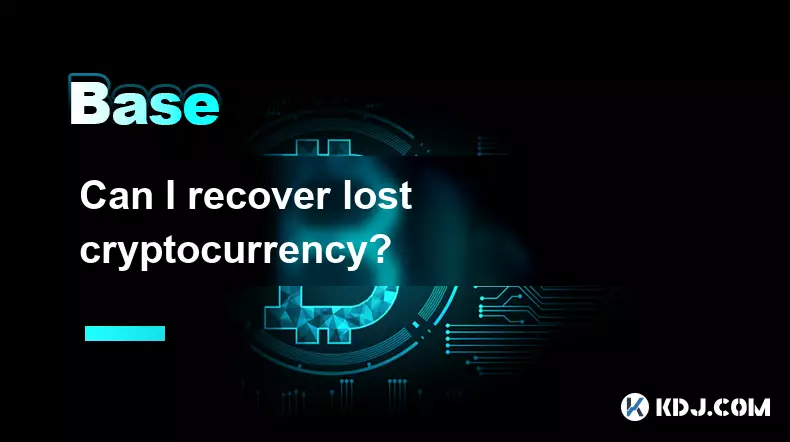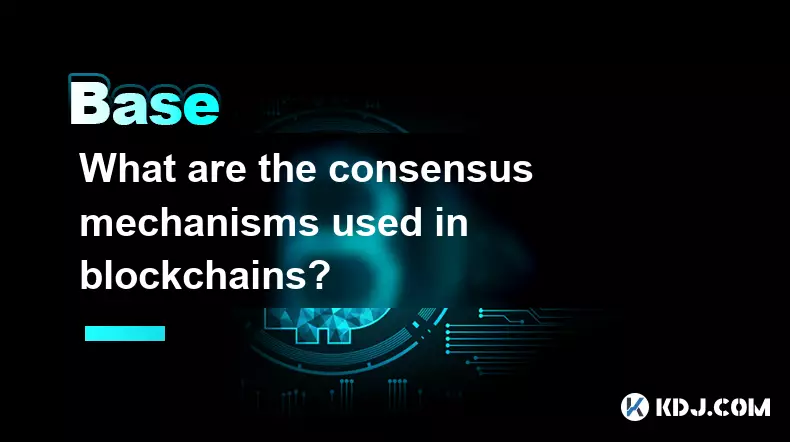-
 bitcoin
bitcoin $109523.663807 USD
-0.13% -
 ethereum
ethereum $4019.526508 USD
2.06% -
 tether
tether $1.000482 USD
0.00% -
 xrp
xrp $2.776815 USD
0.18% -
 bnb
bnb $958.942396 USD
0.12% -
 solana
solana $204.294698 USD
3.84% -
 usd-coin
usd-coin $0.999693 USD
0.00% -
 dogecoin
dogecoin $0.232115 USD
2.09% -
 tron
tron $0.338028 USD
0.84% -
 cardano
cardano $0.790920 USD
1.50% -
 hyperliquid
hyperliquid $44.871443 USD
5.60% -
 ethena-usde
ethena-usde $1.000322 USD
0.04% -
 chainlink
chainlink $21.034165 USD
2.60% -
 avalanche
avalanche $28.794831 USD
-0.54% -
 stellar
stellar $0.360466 USD
1.24%
How does blockchain technology support Web3?
Blockchain enables Web3's decentralized foundation, empowering users with ownership, trustless interactions, and control over data, identity, and digital assets.
Sep 22, 2025 at 08:37 pm

Decentralization as the Foundation of Web3
1. Blockchain technology eliminates centralized control by distributing data across a global network of nodes, ensuring no single entity holds power over user information or digital assets.
2. This decentralized architecture enables peer-to-peer interactions without intermediaries, forming the core principle of Web3 where users own and manage their identities, data, and transactions.
3. Smart contracts execute automatically on blockchains, enforcing rules and agreements without reliance on third parties, which strengthens trustless collaboration in Web3 ecosystems.
4. Decentralized applications (dApps) operate on blockchain networks, giving users full control over their wallets and private keys, reducing vulnerability to censorship or shutdowns.
5. Public ledgers provide transparency, allowing anyone to verify transactions and application logic, fostering accountability and reducing manipulation risks in digital environments.
Tokenization and Digital Ownership
1. Blockchain introduces native asset layers through cryptocurrencies and tokens, enabling value transfer directly within Web3 platforms without traditional financial gateways.
2. Non-fungible tokens (NFTs) represent unique digital ownership of art, collectibles, virtual real estate, and in-game items, empowering creators and users with verifiable scarcity and provenance.
3. Users can monetize content directly via token-based models, bypassing centralized platforms that traditionally take large revenue shares from creators.
4. Token incentives align network participants around shared goals, such as rewarding contributors in decentralized autonomous organizations (DAOs) or liquidity providers in decentralized finance (DeFi).
5. Interoperable token standards like ERC-20 and ERC-721 allow seamless movement of digital assets across multiple dApps and blockchain ecosystems.
Identity and User Sovereignty
1. Self-sovereign identity solutions built on blockchain let users authenticate themselves without surrendering personal data to corporations or governments.
2. Decentralized identifiers (DIDs) enable persistent, portable identities that are cryptographically secure and controlled solely by the individual.
3. Blockchain-based login systems, such as Ethereum addresses or wallet connects, replace password-dependent accounts with tamper-proof authentication methods.
4. Users grant selective access to their data through zero-knowledge proofs or permissioned queries, maintaining privacy while proving eligibility or credentials.
5. Reputation systems anchored on-chain preserve user history across platforms, preventing reset of trust metrics when switching services.
Frequently Asked Questions
What role do consensus mechanisms play in Web3 security?Consensus algorithms like Proof of Stake (PoS) or Proof of Work (PoW) ensure agreement across distributed nodes, preventing fraud and double-spending. These mechanisms maintain integrity even when some participants act maliciously, making Web3 networks resilient against attacks.
How do blockchains enable cross-platform interoperability in Web3?Through standardized protocols and bridge technologies, blockchains allow assets and data to move between different networks. Projects like Polkadot and Cosmos focus on connecting disparate chains, enabling dApps to communicate and share functionality seamlessly.
Can Web3 function without blockchain technology?No viable alternative currently offers the same combination of decentralization, immutability, and cryptographic verification. While other distributed systems exist, only blockchain provides the trustless foundation necessary for true Web3 operation.
Why is immutability important for Web3 applications?Immutability ensures that once data or code is deployed on a blockchain, it cannot be altered retroactively. This protects users from sudden policy changes, fraudulent modifications, or unauthorized deletions, creating a reliable environment for long-term digital interactions.
Disclaimer:info@kdj.com
The information provided is not trading advice. kdj.com does not assume any responsibility for any investments made based on the information provided in this article. Cryptocurrencies are highly volatile and it is highly recommended that you invest with caution after thorough research!
If you believe that the content used on this website infringes your copyright, please contact us immediately (info@kdj.com) and we will delete it promptly.
- Rare 1p Coin Could Fetch £200,000: Are You Holding a Fortune?
- 2025-09-27 12:25:13
- MAGACOIN Finance: Buzz, Risks, and the Altcoin Stampede
- 2025-09-27 12:25:13
- Crypto Wallets & Utility Tokens: What's the Hype?
- 2025-09-27 12:30:02
- Shiba Inu's Burn Rate & Crypto Payroll: A New York Perspective
- 2025-09-27 12:45:11
- Grayscale, Near Protocol, and On-Chain Innovation: A New Era for Crypto?
- 2025-09-27 12:45:11
- Punjab Govt, Centre, and the Financial Package: A Tug-of-War?
- 2025-09-27 12:30:02
Related knowledge

What are some common methods of cryptocurrency market manipulation?
Sep 27,2025 at 02:55am
Wash Trading and Its Impact on Market Perception1. Wash trading involves an individual or entity simultaneously buying and selling the same cryptocurr...

How do I read a cryptocurrency whitepaper?
Sep 27,2025 at 05:54am
Understanding the Structure of a Cryptocurrency Whitepaper1. Begin by identifying the executive summary, which outlines the project’s core vision and ...

Can I recover lost cryptocurrency?
Sep 25,2025 at 08:18am
Understanding the Nature of Cryptocurrency Loss1. Cryptocurrency operates on decentralized networks, meaning there is no central authority to reverse ...

How can I earn passive income from cryptocurrency?
Sep 23,2025 at 10:18am
Staking Cryptocurrencies for Regular Returns1. Many blockchain networks operate on a proof-of-stake (PoS) consensus mechanism, allowing users to earn ...

What are gas fees in cryptocurrency transactions?
Sep 26,2025 at 02:00am
Understanding Gas Fees in Blockchain Transactions1. Gas fees are payments made by users to compensate for the computing energy required to process and...

What are the consensus mechanisms used in blockchains?
Sep 24,2025 at 10:00am
Proof of Work and Its Role in Blockchain Security1. Proof of Work (PoW) is one of the earliest consensus mechanisms, first implemented by Bitcoin. Min...

What are some common methods of cryptocurrency market manipulation?
Sep 27,2025 at 02:55am
Wash Trading and Its Impact on Market Perception1. Wash trading involves an individual or entity simultaneously buying and selling the same cryptocurr...

How do I read a cryptocurrency whitepaper?
Sep 27,2025 at 05:54am
Understanding the Structure of a Cryptocurrency Whitepaper1. Begin by identifying the executive summary, which outlines the project’s core vision and ...

Can I recover lost cryptocurrency?
Sep 25,2025 at 08:18am
Understanding the Nature of Cryptocurrency Loss1. Cryptocurrency operates on decentralized networks, meaning there is no central authority to reverse ...

How can I earn passive income from cryptocurrency?
Sep 23,2025 at 10:18am
Staking Cryptocurrencies for Regular Returns1. Many blockchain networks operate on a proof-of-stake (PoS) consensus mechanism, allowing users to earn ...

What are gas fees in cryptocurrency transactions?
Sep 26,2025 at 02:00am
Understanding Gas Fees in Blockchain Transactions1. Gas fees are payments made by users to compensate for the computing energy required to process and...

What are the consensus mechanisms used in blockchains?
Sep 24,2025 at 10:00am
Proof of Work and Its Role in Blockchain Security1. Proof of Work (PoW) is one of the earliest consensus mechanisms, first implemented by Bitcoin. Min...
See all articles










































































